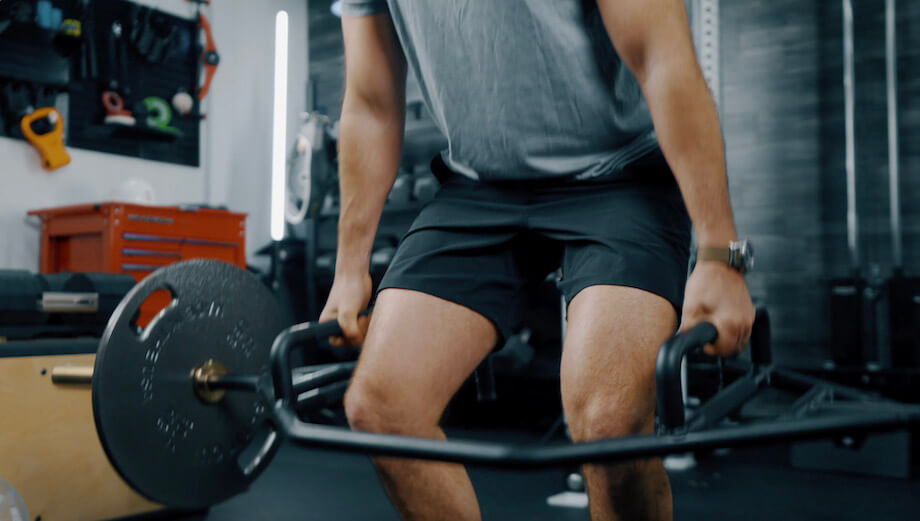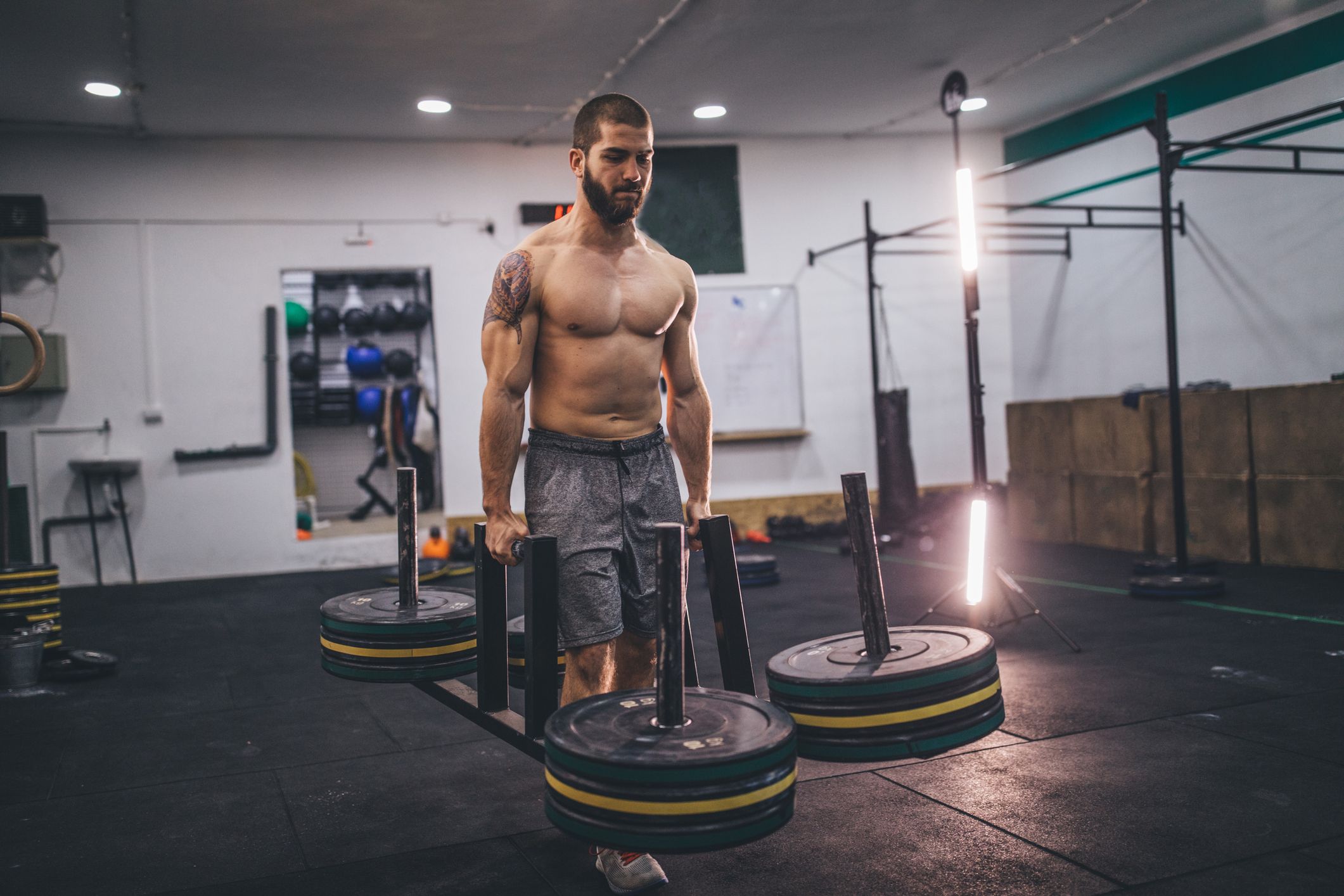Looking to switch up your workout routine and find an alternative to the classic deadlift? Whether you’re a beginner looking for a more beginner-friendly exercise or an experienced lifter wanting to add some variety to your training, deadlift alternatives can be a great option. In this guide, we’ll share some of the best deadlift alternatives that can help you build strength, target specific muscles, and avoid any potential injuries.

6 Best Deadlift Alternatives
Here are 6 excellent exercises that can provide similar benefits and results as the classic deadlift:
- Romanian Deadlift (RDL): This exercise targets your hamstrings, glutes, and lower back, just like the traditional deadlift. Focus on maintaining a straight back and hinging at your hips to perform this movement correctly.
- Sumo Deadlift: The sumo deadlift emphasizes your inner thighs and glutes while still working your entire posterior chain. Take a wider-than-shoulder-width stance and keep your toes pointed slightly outward to perform this exercise.
- Trap Bar Deadlift: Known as the “friendly deadlift,” the trap bar deadlift is less stressful on your lower back while offering similar benefits. It’s especially great for beginners. Step inside the trap bar, grip the handles, and push your hips forward to lift the weight.
- Glute Bridge: This exercise primarily targets your glutes and hamstrings. Lying on your back with your knees bent, lift your hips off the ground until your body forms a straight line from your shoulders to your knees. Squeeze your glutes at the top for maximum activation.
- Single-Leg Deadlift: This exercise not only works your entire posterior chain but also challenges your balance and stability. Stand on one leg while keeping the other leg straight and extending it backward. Lower your torso and lift the back leg simultaneously, focusing on keeping your back straight.

- Bulgarian Split Squat: This exercise places a significant demand on your quads, glutes, and hamstrings. Standing with one foot on a bench or step behind you, lower your body into a lunge position, keeping your front knee aligned with your ankle.
Why look for deadlift alternatives?
While the traditional deadlift is a highly effective exercise for building overall strength and muscle, there are several reasons why you may want to explore alternative exercises.
1. Target Specific Muscle Groups
One of the key advantages of incorporating deadlift alternatives is the ability to target specific muscle groups. While the deadlift primarily targets the muscles of the posterior chain, including the glutes, hamstrings, and lower back, alternative exercises can help you focus on other muscle groups as well. For example, exercises like the Romanian deadlift and glute bridge can provide a greater emphasis on the glutes, while the trap bar deadlift targets the quadriceps and upper back.
2. Address Weaknesses and Imbalances
Another reason to consider incorporating deadlift alternatives is to address weaknesses and imbalances in your physique. Not everyone has perfect symmetry or equal strength in all muscle groups. By incorporating alternative exercises, you can specifically target weaker areas, promoting balanced muscle development and reducing the risk of injury.
3. Accommodate Physical Limitations or Injuries
If you have a pre-existing injury or physical limitation that prevents you from performing the traditional deadlift with proper form, incorporating alternatives can be a game-changer. Deadlift alternatives offer modifications and variations that can reduce stress on certain joints or muscle groups while still providing a challenging workout. This allows you to continue progressing towards your fitness goals without exacerbating any existing conditions.
4. Enhance Variety and Maintain Motivation
Finally, incorporating deadlift alternatives into your training routine can enhance variety and keep your workouts exciting and engaging. Trying out different exercises not only challenges your muscles in new ways but also prevents boredom and monotony. Mix things up, experiment with different movements, and keep your fitness journey fresh and motivating.
Conclusion
So, don’t be afraid to step outside the traditional deadlift and explore the world of deadlift alternatives. Your body will thank you for the variety, and you’ll be well on your way to achieving your fitness goals. Keep pushing yourself and enjoy the journey to a stronger, healthier you!
FAQs:
What machine can I use instead of deadlift?
A great alternative to deadlifts is the cable pull-through. This exercise mimics the deadlift movement and is performed using a low pulley machine. It is a full-body exercise that engages your muscles for a longer duration due to its slower tempo.
Do deadlifts make you the strongest?
When done correctly, deadlifts can help you gain lean muscle mass in your legs, back, arms, and shoulders. They also improve core strength, leading to increased power, endurance, and sports performance.
What are the disadvantages of deadlifts?
Deadlifts come with certain risks, such as injury if proper technique and form are not maintained. They can also cause muscle imbalances and strain on the central nervous system. It’s important to approach deadlifting with care and prioritize proper form and recovery.
Why shouldn’t I deadlift every day?
Deadlifting every day can lead to excessive fatigue, lack of recovery, and increased risk of injury. Varying the weight, sets, reps, and types of deadlifts on different training days allows for better recovery and prevents overtaxing your body.

Hello, I’m Ravindra. Over the years, I’ve immersed myself deeply into the world of fitness and health, transforming both my body and mind. Writing has allowed me to share my journey, insights, and expertise with those just starting out and seasoned fitness enthusiasts alike. Beyond just routines and diets, I believe in inspiring others to adopt a holistic approach to well-being.
